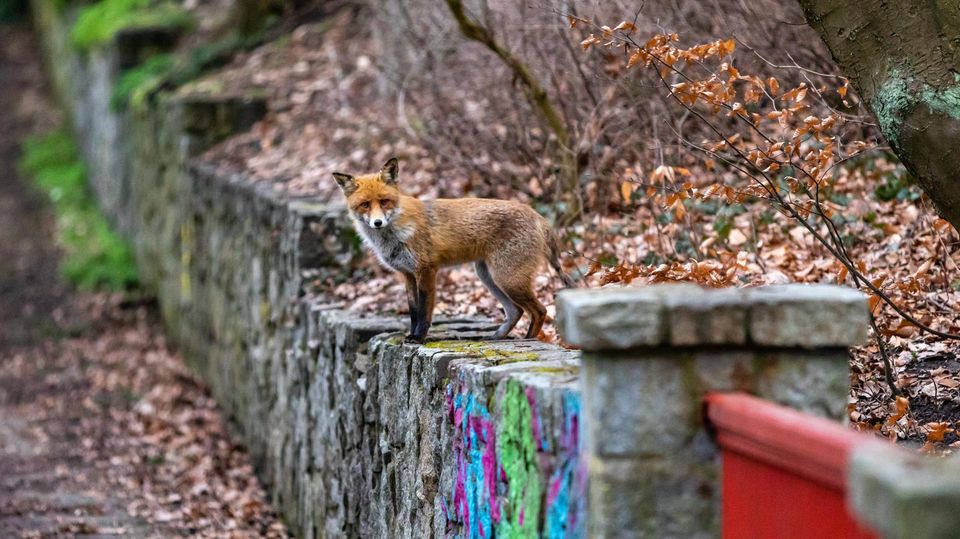Deadly tradition
Fox girl almost burned alive – why Easter bonfires are often “pyres” for wild animals
A red fox pup. Easter fires are a danger to animals
© Image Broker / Imago Images
Easter fires look spectacular. But while people watch, animals often burn inside at the same time. That almost happened to little “Fillie”.
The story of “Fillie Osterfuchs” moved many people in Hamburg two years ago. The fox girl was only about four weeks old when she suffered severe burns Easter fire suffered, as the Hamburg animal protection association reported. For weeks it was unclear whether the little one would survive – she was cared for around the clock by animal rights activists until, months later, she was finally on the mend and strong enough to be released into the wild.
The Hamburg animal protection association and other organizations warn again and again: Easter fires pose a deadly danger to all kinds of wild animals. “Small and young animals in particular like to use the piles of brushwood and brush as shelter,” wrote Luisa Finsterwalder in one Press release from the club. The animal rights activists, who have cared for many burn-injured animals in the Hanseatic city, put it drastically using the example of the almost burned baby fox: an Easter fire could become a “pyre for wild animals”.
Wood piles for Easter fires are popular shelters for many animal species
Piles of wood and brushwood that are built weeks before they are ignited are particularly dangerous. Many animals are happy about such living spaces – especially now that it is still quite cool at night.
Anyone who has ever piled up a pile of wood or brushwood in the garden knows that animal inhabitants quickly move in there: these can be hedgehogs and birds, but also frogs and mice – and certainly insects. If the pile is then simply set on fire, the animals can no longer escape and burn miserably in the inferno.

This is what “Fillie” looked like shortly after her rescue. The baby fox was nursed back to health by animal rights activists in Hamburg after it was almost burned in an Easter fire.
© Hamburg Animal Welfare Association
The Animal Welfare Association therefore recommends avoiding Easter fires completely. If you really want to light one, you should keep a few tips in mind:
The pile should only be very loosely constructed so that it is less attractive to wild animals. Nevertheless, it must be completely rearranged immediately before lighting so that the animals that have hidden there can escape. The animal protection organization Four Paws also draws attention to this in a recent press release. Unfortunately, many Easter fire operators still don’t do this, regrets Eva Lindenschmidt, wildlife expert at the association.
The Hamburger advises that you should make noise when changing layers to scare the animals away Animal protection association. But animal rights activists say that not even that helps reliably. Because noise particularly scares adult animals, young animals are more likely to hide.
Stacked wood in the garden can be a beautiful biotope
Actually, piles of wood or brushwood are far too beautiful and interesting to burn, as the Hanseatic city’s animal rights activists write. Such small biotopes provide welcome habitat for all sorts of mammals, birds, amphibians and insects, and are interesting to observe.
They are far too good to let them burst into flames as an Easter bonfire.
Sources: Hamburg animal protection association, The story of “Fillie Osterfuchs” on the website of the Hamburg Animal Welfare Association“24Hamburg.de“
Read in the stern+ archive: As soon as dusk falls, there are wild creatures to marvel at in Berlin: foxes, raccoons, even wild boars. What drives the animals into the city? And what do the nocturnal creatures tell us about us humans? On a foray with wildlife biologist and best-selling author Sophia Kimmig.



